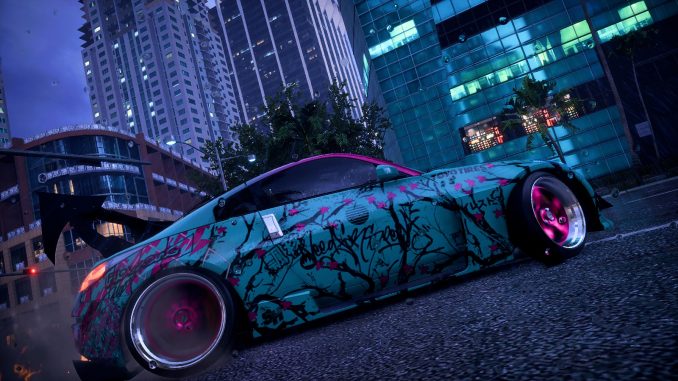
The first generation Delta dominated the World Rally Championship during the late 1980s and early 1990s. The homologation requirements of Group A regulations meant marketing road-going versions of these competition cars — the Lancia Delta HF 4WD and HF Integrale. A total of 44,296 Integrales were produced.
The first true performance-oriented Delta was the Delta HF, which was introduced in July 1983 and went on sale in September after a first appearance at the Frankfurt Motor Show.The HF acronym—last used on the Stratos—stood for “High Fidelity”, and had been applied to sports and racing variants of Lancia cars since 1966.It was front-wheel drive and powered by a turbocharged version of the 1.6-litre engine from the Delta GT; the system consisted of a Garrett TBO-225 turbocharger with wastegate valve, an air-to-air heat exchanger, a blow-through twin-choke Weber carburetor and Marelli Microplex ignition with pre-ignition control. To withstand the additional stress deriving from turbocharging, upgrades were made to the oil system, with increased capacity and an oil cooler, and to the cylinder heads with sodium-filled valves. The gearbox was a ZF 5-speed unit. Dampers, springs and steering were retuned, and the tyres were wide 175/65 Michelin TRX on R 340 alloy wheels. In true Lancia tradition the exterior of the HF was relatively understated: changes were limited to silver “HF” badging on the grille, a deeper chin spoiler, black trim as on the GT, black roof drip rail mouldings, black side skirts with small silver “turbo” badges in front of the rear wheels, the 1982 roof spoiler painted in black, air intake cowls on the bonnet grilles, bronze-tinted athermic glass and 8-spoke alloy wheels. The cabin featured a leather-covered steering wheel and supplementary digital instrumentation with bar indicators; the upholstery material was the usual beige Zegna fabric, and Recaro sport seats covered in the same cloth were optional. About ten thousand Delta HF were made, in a two-year production period.
A special limited edition of the HF, named HF Martini, was launched at the March 1984 Geneva Motor Show.To celebrate the rally victories of the Lancia-Martini Rally 037 it was painted white with a Martini stripe on the sides below the door handles, and carried Martini-coloured badging; Recaro sport seats were standard. Only 150 were produced between 1984 and 1985.
The Delta HF 4WD was unveiled at the April 1986 Turin Motor Show,becoming the top of the Delta range.
The HF 4WD’s 1,995 cc, twin-cam, 8-valve engine with two counter-rotating balancing shafts was derived from the Lancia Thema i.e. turbo saloon. It was equipped with a Garrett turbocharger, a wastegate valve, an air-to-air intercooler and Weber IAW integrated electronic ignition and fuel injection; to support turbocharging it also adopted tri-metallic crankpin and main bearings, sodium-filled valves, bronze valve guides and an oil cooler.Engine output was 165 PS (121 kW; 163 hp) at 5,250 rpm, and 26.5 kg⋅m (260 N⋅m; 192 lb⋅ft) of torque at 2,750 rpm, that could rise to 29 kg⋅m (284 N⋅m; 210 lb⋅ft) for short periods of time thanks to an overboost function.On the Delta HF 4WD the torque split ratio of the central epicyclic differential stood at 56/44 front to rear.
The basic suspension layout of the Delta 4WD remained the same as in the rest of the two-wheel drive Delta range: MacPherson strut–type independent suspension on all four corners, dual-rate dampers and helicoidal springs, with the struts and springs set slightly off-centre. The suspension mounting provided more isolation by incorporating flexible rubber links. Progressive rebound bumpers were adopted, while the damper rates, front and rear toe-in and the relative angle between springs and dampers have all been altered. The steering was power assisted rack and pinion. The alloy wheels were the 5½J×14″ Cromodora 8-hole ones found on the HF turbo, but wore wider, lower profile 185/60 SR14 tyres. Brakes were the same all-around disks (vented fronts) used on the GT i.e. and HF turbo.
Visually the HF 4WD carried over most accoutrements of the HF turbo—such as the bonnet cowls, side skirts, and blacked-out trim—and then added more. Besides the new bumpers (the front one with integrated fog lights) that would soon be adopted by all Deltas with the 1986 facelift, there were quadruple round headlights—the inner pair smaller in diameter than the outer, red piping around the grille openings, two double pinstripes highlighting the waistline and side crease, and dual exit exhausts. Red “HF 4WD” scripts and badges were carried on the radiator grille, side skirts and on the matte black insert between the tail lights. Inside seats and door panels were upholstered in a combination of grey Alcantara and multicolour “Harlem” wool cloth, supplied by Italian fashion house Missoni. Optional Recaro anatomic sport seats were covered in the same materials. The instrumentation had yellow scales and hands, a prerogative of all HF models to come; it added two auxiliary gauges to the six already present in the Delta’s instrument binnacle, and included a boost pressure gauge, a voltmeter, oil and water thermometers, as well as an oil manometer.
A true legend.
I hope you enjoy the Guide we share about Need for Speed™ Heat – Lancia Delta Intregrale HF; if you think we forget to add or we should add more information, please let us know via commenting below! See you soon!
- All Need for Speed™ Heat Posts List


Leave a Reply